A groundbreaking has been held for the affordable mixed-use development at 9200 South Burley Avenue in South Chicago. Located at the corner of East 92nd Street, we last covered the project in the fall when it received partial funding and City Council approval. The new structure will replace a large vacant lot near the Calumet River.
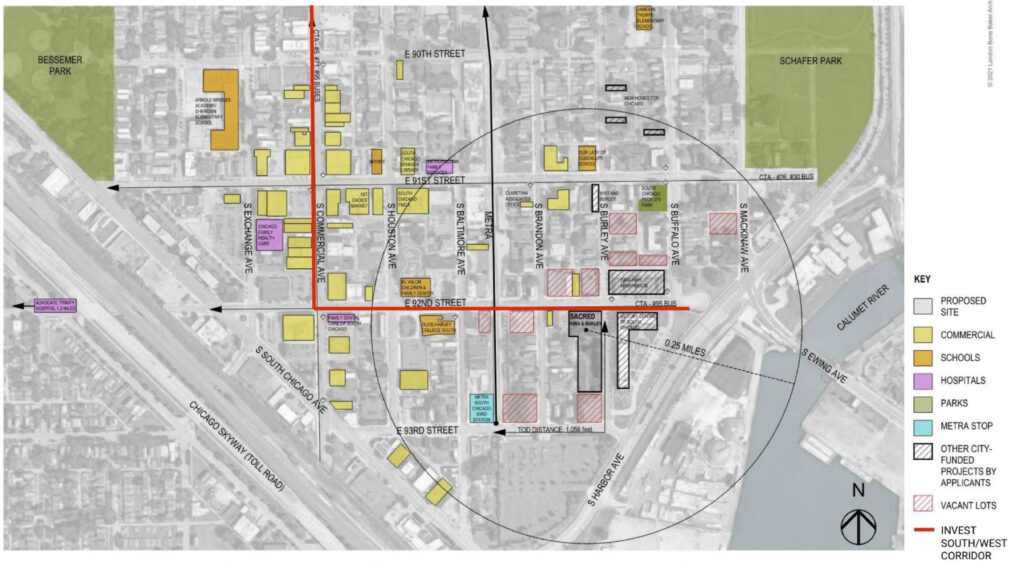
Site context of 9200 S Burley Avenue by LBBA
In development since 2022, the project is being led by a partnership between Interfaith Housing Development Corporation and Claretian Associates. Local architecture firm LBBA is responsible for the design. The groundbreaking ceremony was attended by various representatives, including Mayor Brandon Johnson.
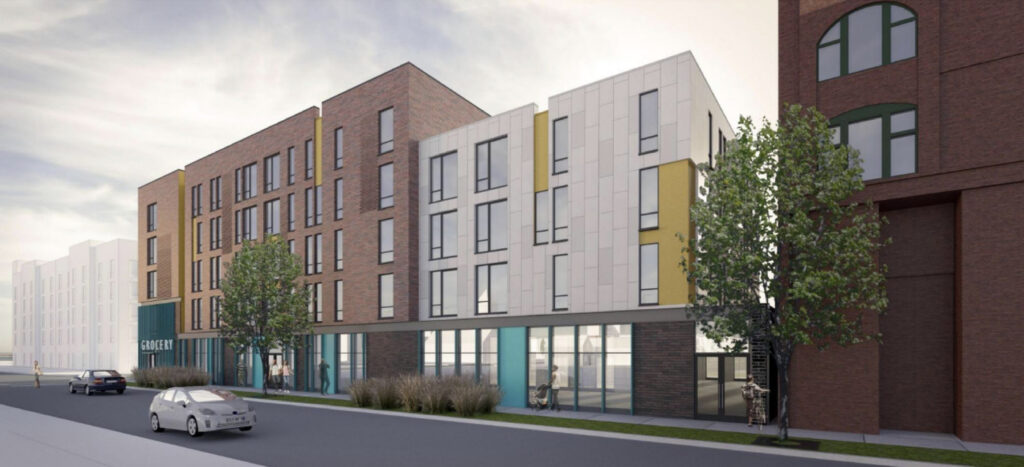
Rendering of 9200 S Burley Avenue by LBBA
The L-shaped structure will rise five stories and approximately 80 feet in height along the streetfront. Behind the building, there will be a patio, green space, playground, and a sports court. To the south, a 44-space parking lot will be accessible from Burley Avenue. This lot will support the 6,500-square-foot ground-floor commercial space at the corner, which is earmarked for a potential grocery store.
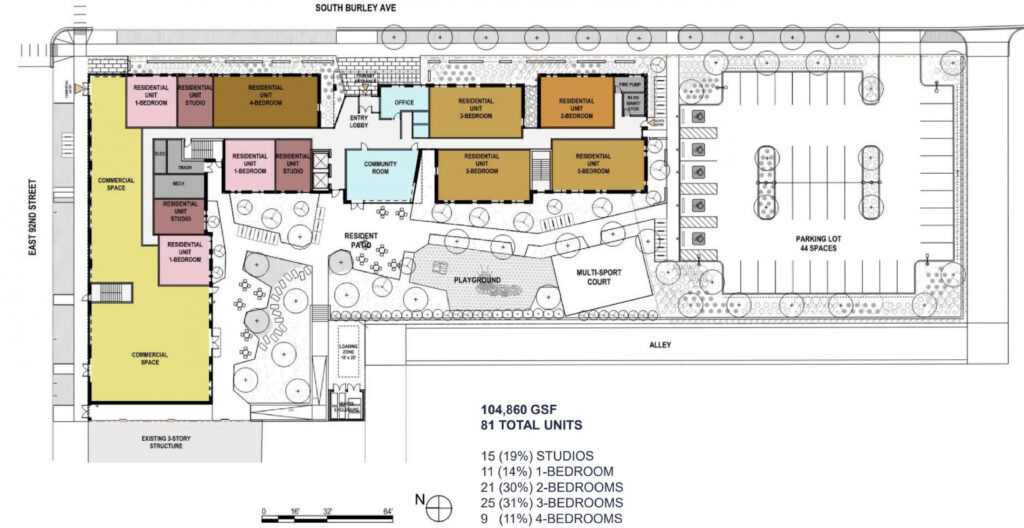
Floor plan of 9200 S Burley Avenue by LBBA
The remainder of the ground floor will include a small lobby, office, community room, and some of the development’s 81 total residential units. All units will be affordable to individuals and families earning 30 to 60 percent of the area median income (AMI). The unit mix includes 15 studios, 11 one-bedroom, 21 two-bedroom, 25 three-bedroom, and nine four-bedroom apartments.
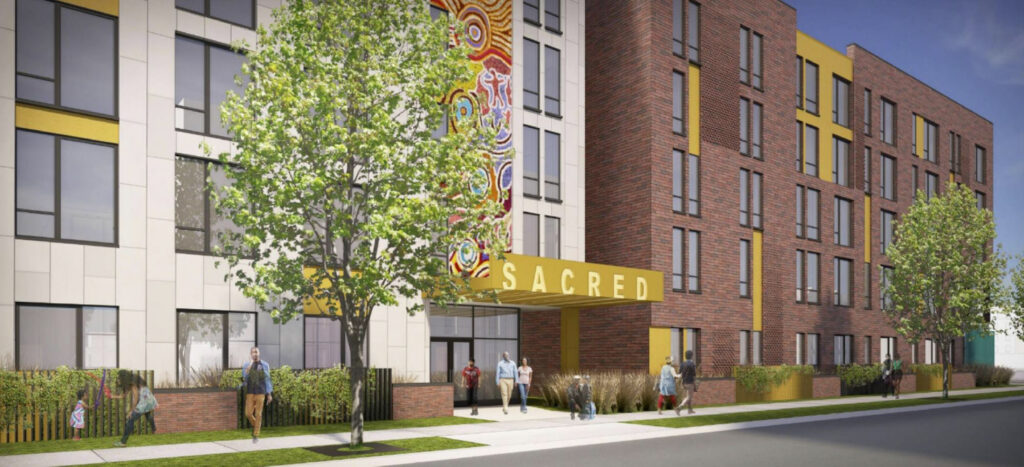
Rendering of 9200 S Burley Avenue by LBBA
Clad in a combination of red brick, white panels, and decorative accents, the development—dubbed SACRED Apartments—has a total cost of $47 million. Funding will come from a mortgage, various grants, TIF funds, and LIHTC equity. Henry Bros. Co. is serving as the contractor, with construction expected to take 18 to 24 months to complete.
Subscribe to YIMBY’s daily e-mail
Follow YIMBYgram for real-time photo updates
Like YIMBY on Facebook
Follow YIMBY’s Twitter for the latest in YIMBYnews

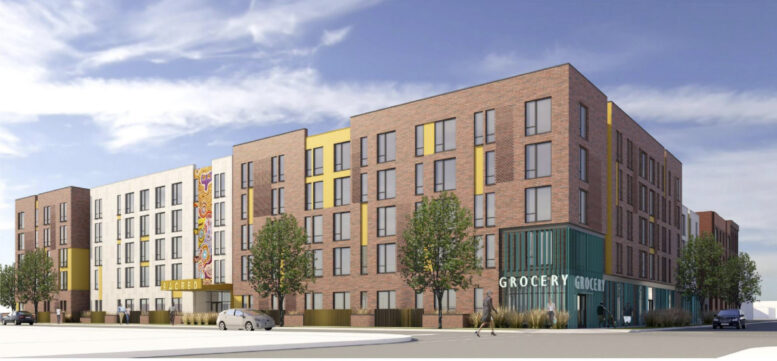
Are we ever going to see nice designed, market rate developments on the southside or is 2/3 of this city doomed to just be filled with dilapidation and ugly “affordable” (which is a scam btw) housing?
If Chicago actually wants to grow (which it doesn’t clearly) it needs to get serious about development.
End parking minimums and allow single-stair buildings up to six or seven stories on standard lots as a start. Pritzker needs to get on board the “abundance” movement and embrace Yimbyism like Newsom just did in California. Removing as much red-tape as possible should be a common-sense priority.
The Sun-Belt is booming while northern cities fight progress arguing over bird migration patterns, property-tax increases, shadows, noise, views, and crime. We have to ignore the senseless endless whinging of people that believe anything over 4-stories belongs in the Loop.
$580K per unit for affordable housing, apparently to be filled with tenants who are eligible for CHA vouchers (which is government paying rent after building the building). There is no possible payback period that makes this affordable housing. The government cannot build housing cost effectively.
How many spaces for grocery stores do they need to “advertise” as coming to these developments when no grocery store will ever fill the space? How about more apartments?
What about converting the school buildings that are less than 20% occupied? If it’s good enough for the loop, why isn’t it good enough for the neighborhoods? Oh, that’s right, another government entity has agreed to keep empty schools open in perpetuity.
Nobody is saying it’s being made as affordable as possible, but the rent rate will be affordable.
Maybe save those arguments about grocery stories for neighborhoods without food deserts.
This one is actually not too bad, cost-wise. OK, not great. But not too bad.
In assessing this, I note that the apartments are larger than in the usual unaffordable city development, where they average a tiny bit over one bedroom. This development appears to average something more like 2 bedrooms each on average.
There haven’t been affordable housing in years, Am with the gentle men in this article, u got people living in hotels who have dencent jobs and can’t find affordable housing only time it’s talked about is when elections time or u want people to give something or vote. I live in a so called base on your income and am paying over a 1000 dollars for rent in Riverdale no amenities nothing to do over and I have to go all the way to Lansing and homewood to shop. So shut up and put up, S o how long this going to take. Am done voting for people that don’t help the people like me,